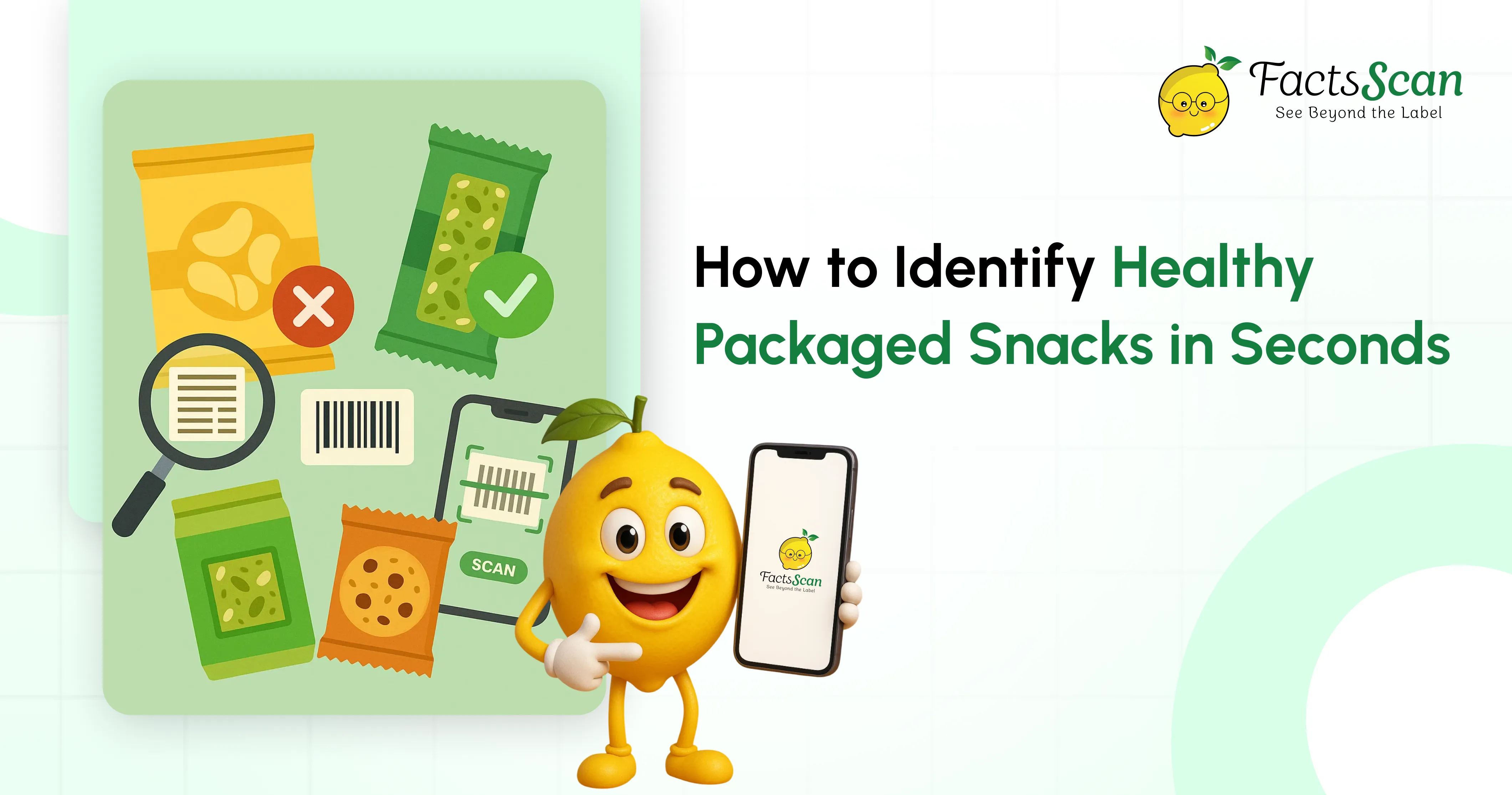How to Identify Healthy Packaged Snacks in Seconds
Summary :
Finding healthy packaged snacks is challenging when clever marketing disguises nutrition facts and confusing labels hide harmful ingredients. Smart shoppers can decode labels instantly using simple nutrition checks, ingredient red flags, and powerful food scanning apps like FactsScan that reveal health scores, ingredient warnings, and suggest better alternatives with just a quick barcode scan.
Introduction
The love for packaged snacks has never been stronger. From crunchy chips and sweet biscuits to protein bars and fruit juices, these convenient treats fill grocery store aisles and our daily lives. But behind colorful packaging and appealing claims lies a complex web of marketing tactics designed to make processed products appear healthier than they actually are.
The challenge today isn’t finding snacks, it’s finding truly healthy ones. Food manufacturers use sophisticated marketing strategies that can transform high-sugar cereals into “wholesome” breakfast options and turn processed chips into “natural” snacks. Meanwhile, confusing ingredient lists, misleading serving sizes, and health claims like “low-fat” or “all-natural” create a maze of confusion for health-conscious consumers.
This is where making quick, informed decisions becomes crucial. Whether you’re a busy parent packing school lunches, a fitness enthusiast choosing protein bars, or someone simply trying to eat better, you need practical tools to identify healthy snacks in seconds rather than spending precious time deciphering every label.
Check the Nutrition Label in Seconds
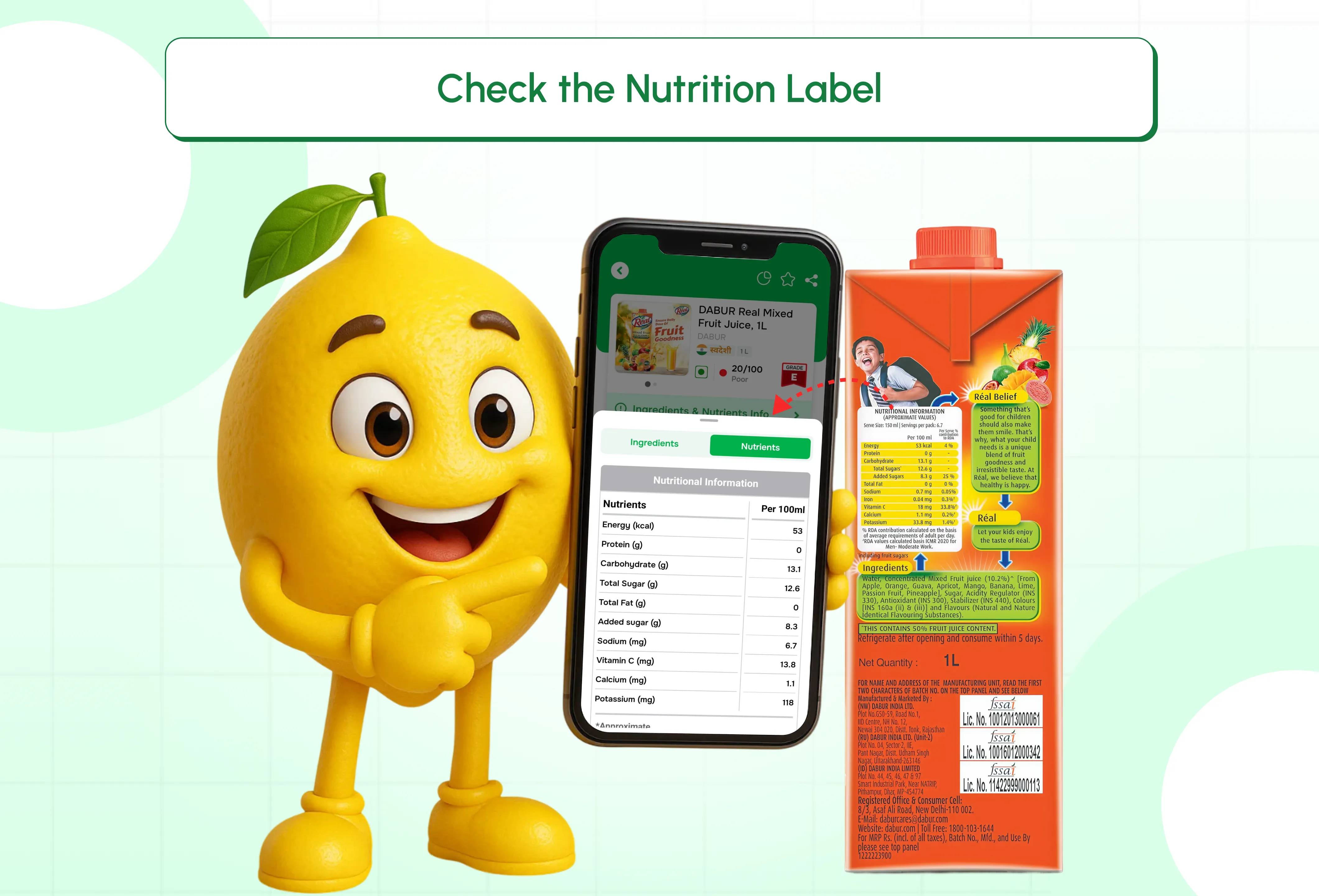
The nutrition facts panel holds the key to understanding what you’re really eating, but knowing what to look for makes all the difference. Here’s how to scan for the most important information quickly:
Start with the serving size: This is where many people get tricked. A bag of granola might list the serving size as 1/4 cup, but if you eat a full cup, you’re getting four times the sugar, fat, and calories listed. Always check how much you actually eat versus the listed serving size.
Focus on these key numbers when scanning nutrition labels:
- Calories: Look for snacks under 200 calories per realistic serving
- Sugar: Aim for less than 10 grams per serving for most snacks
- Sodium: Keep it under 200mg per serving to avoid excessive salt intake
- Saturated fat: Choose options with less than 3 grams per serving
Watch for serving size manipulation tricks: Manufacturers often make serving sizes unrealistically small to make nutrition numbers look better. A single muffin might be labeled as “2 servings,” or a small bag of chips might contain “2.5 servings.” Always do the math to understand what you’re actually consuming.
Use the % Daily Value as your guide: If you want to consume less of a nutrient like sodium or saturated fat, choose foods with 5% Daily Value or less. For beneficial nutrients like fiber, look for 20% Daily Value or more.
Scan the Ingredient List
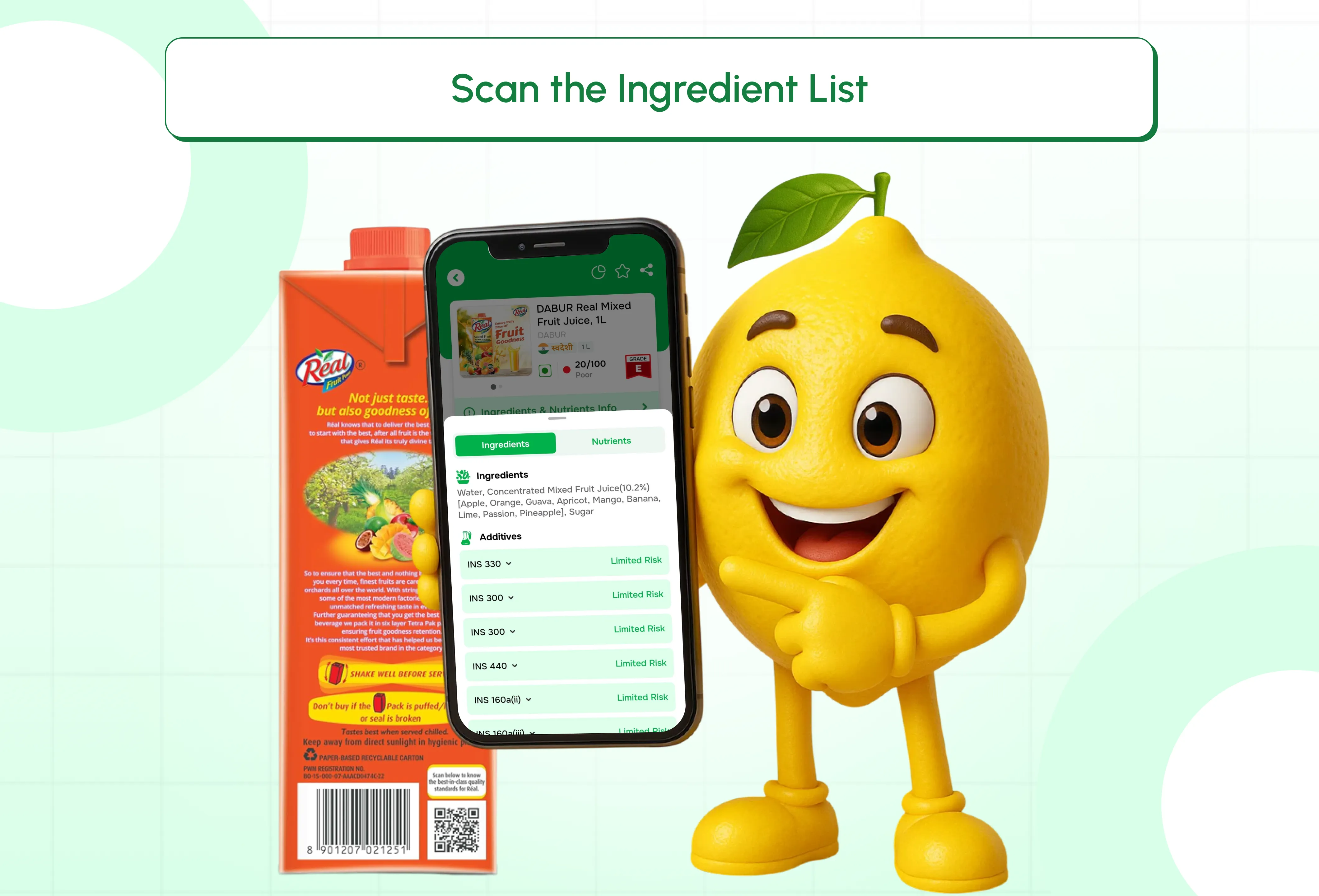
The ingredient list reveals the truth behind flashy marketing claims. Ingredients are listed by weight from highest to lowest, so the first few ingredients make up most of what you’re eating.
Red flags to avoid:
- Palm oil: High in saturated fats that can raise bad cholesterol and increase heart disease risk. Often hidden as “vegetable oil” or “hydrogenated oil”
- High fructose corn syrup: A major driver of obesity and insulin resistance that spikes blood sugar levels
- MSG (Monosodium Glutamate): Can cause headaches, nausea, and allergic reactions in sensitive individuals
- Artificial colors like tartrazine and sunset yellow: Linked to hyperactivity in children and allergic reactions
- Trans fats or partially hydrogenated oils:Increase bad cholesterol while lowering good cholesterol, significantly raising heart disease risk
Green flags to seek out:
- Whole grains: Listed as first ingredients
- Nuts, seeds, and legumes: Providing healthy fats and protein
- Natural ingredients: You can recognize and pronounce
- Minimal ingredient lists: With fewer than 10 items
- Natural sweeteners like: Dates, honey, or maple syrup instead of artificial alternatives
Avoid Marketing Gimmicks
Food marketing is designed to sell products, not necessarily inform you about health. Here are the most common tricks that make unhealthy snacks appear healthy.
- “Low Fat” Deception: When manufacturers remove fat, they often add sugar to maintain taste. A low-fat cookie might contain twice the sugar of the regular version, making it potentially worse for your health.
- “No Added Sugar” vs Hidden Sweeteners: Products may not have added sugar but could contain natural fruit concentrates, agave nectar, or other sweeteners that still spike blood sugar levels. Always check the total sugar content, not just added sugars.
- “Natural Flavors” Confusion: The term “natural” has no legal definition in many countries. Natural flavors can still be highly processed and may not provide any nutritional benefit. Don’t let this claim influence your decision.
- “Gluten-Free” Health Halo: Even water is gluten-free, but that doesn’t make it a healthy food. Gluten-free snacks can still be loaded with sugar, unhealthy fats, and artificial ingredients.
- “Multigrain” Misleading Claims: A multigrain cookie might only have a sprinkle of different grains while being primarily made of refined flour and sugar. Look for “whole grain” as the first ingredient instead.
Also Read:
How to Know if Packaged Food is Healthy?Smart Tricks to Compare Snacks Quickly
When faced with multiple options, these quick comparison strategies help you identify the healthiest choice:
- Energy bars vs biscuits: Look for bars with at least 3 grams of protein and fiber, minimal added sugars (under 8 grams), and recognizable ingredients like oats, nuts, and dried fruits. Avoid bars that list sugar or corn syrup in the top three ingredients.
- Chips vs roasted snacks: Choose air-popped or baked options over fried ones. Roasted chickpeas, nuts, or seeds typically provide more protein and fiber than potato chips while containing less unhealthy fats.
- Fruit juices vs whole fruit-based snacks: Whole fruit snacks retain fiber that slows sugar absorption, while fruit juices often contain as much sugar as soda. Look for snacks with visible fruit pieces or choose dried fruits without added sugar.
- Quick protein comparison: For protein-rich snacks, aim for at least 5 grams of protein per 150 calories. Greek yogurt, nuts, and legume-based snacks typically offer better protein-to-calorie ratios than processed protein bars.
Role of Food Scanning Apps
Food scanning apps have revolutionized how we shop for healthy snacks by instantly decoding complex labels and providing health assessments in seconds.
- How barcode scanners save time: Instead of manually reading every nutrition label and researching unfamiliar ingredients, you can scan a product’s barcode and receive comprehensive information instantly. These apps access vast databases containing nutritional information for millions of products.
- Instant nutrition breakdown: Modern scanning apps analyze calories, macronutrients, additives, allergens, and assign overall health scores. They translate complex chemical names into understandable health impacts, showing you exactly what you’re consuming.
FactsScan App Features to Highlight:
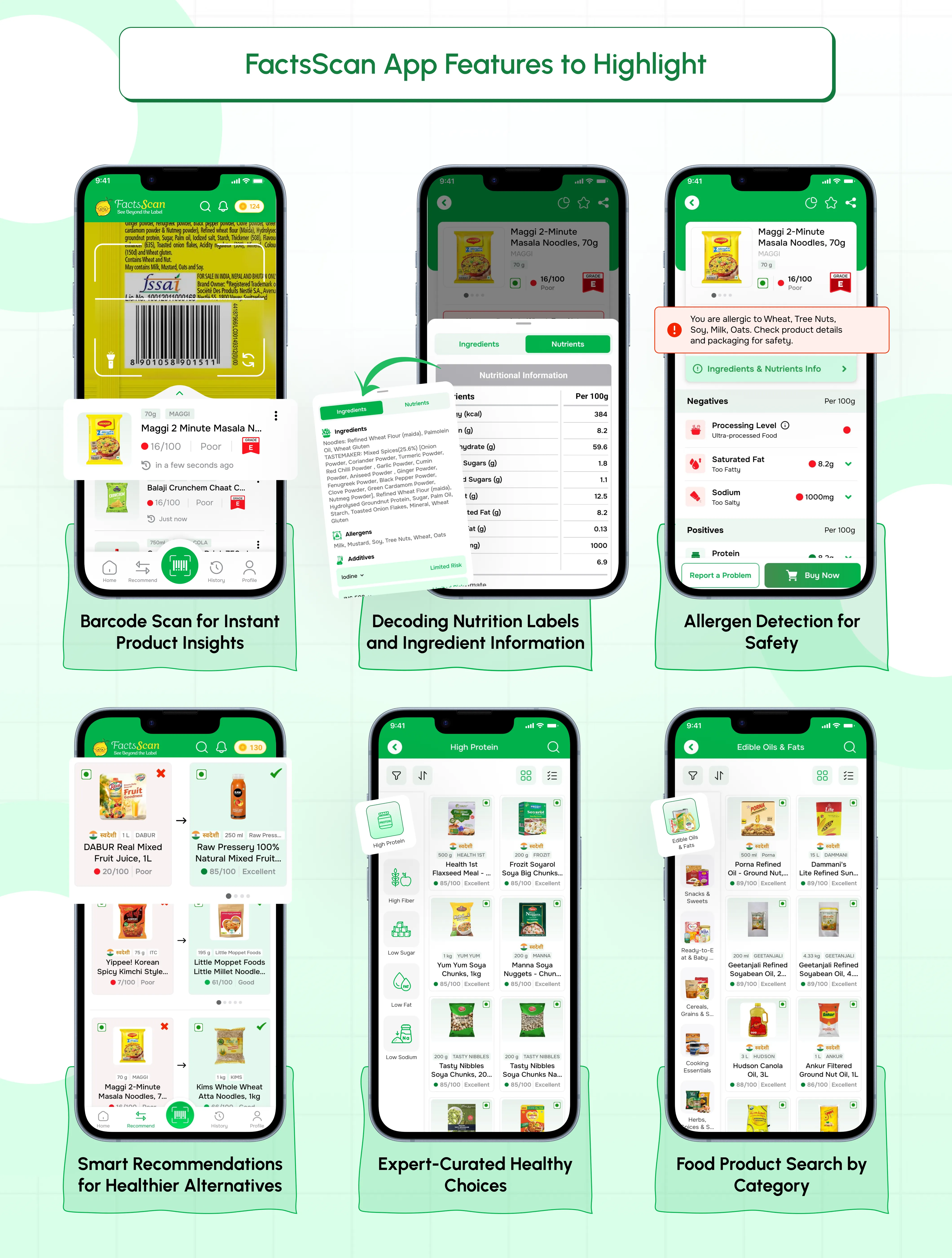
- Barcode Scan for Instant Product Insights: Simply scan any packaged food product to receive a detailed breakdown of nutrition facts, ingredient lists, and additives. The app assigns health scores from 1-100 and grades products from A (healthy) to E (unhealthy).
- Decode Nutrition Labels and Ingredient Information: FactsScan simplifies complex nutrition information by highlighting key nutrients and flagging harmful ingredients like trans fats, artificial preservatives, and excessive additives.
- Allergen Detection for Safety: The app identifies common allergens and warns users about potential reactions, making it invaluable for people with food sensitivities.
- Smart Recommendations for Healthier Alternatives: When you scan an unhealthy product, FactsScan automatically suggests better alternatives in the same category, helping you make immediate healthier swaps.
- Expert-Curated Healthy Choices: Access categories of expert-recommended foods based on specific health goals like high-protein snacks, low-sugar options, or heart-healthy alternatives.
- Food Product Search by Category: Browse and compare products across different categories with health ratings and key details, perfect for discovering new healthy options.
Real-Life Use Cases
- Parents checking school snacks: A mother scanning her child’s favorite fruit gummies discovers they contain 22 grams of sugar and artificial colors linked to hyperactivity. The app suggests natural fruit leather with no added sugar as a healthier alternative.
- Fitness lovers comparing protein bars: An athlete uses FactsScan to compare protein bars and discovers that the “natural” bar actually contains palm oil and artificial sweeteners, while a lesser-known brand offers clean ingredients with the same protein content.
- Health-conscious buyers at supermarkets: A diabetic shopper scans different snack options to find products with low sugar content that won’t spike blood glucose levels. The app’s instant feedback helps make quick decisions while shopping.
- Busy professionals making quick choices: Someone grabbing snacks during a lunch break uses the app to quickly identify options that align with their weight management goals, avoiding products with excessive calories or unhealthy fats.
Conclusion
Identifying healthy packaged snacks doesn’t have to be a time-consuming puzzle. By focusing on key nutrition numbers, recognizing ingredient red flags, avoiding marketing tricks, and using smart comparison strategies, you can make informed decisions in seconds rather than minutes.
The most powerful tool in your healthy snacking arsenal is a reliable food scanning app that cuts through marketing confusion and reveals the truth about what you’re eating. Whether you’re comparing protein bars, checking school snacks for harmful additives, or discovering healthier alternatives to your favorite treats, instant access to comprehensive nutritional information empowers you to make choices that align with your health goals.
Remember, the healthiest snacks often come with the simplest ingredient lists and the most transparent nutrition information. When in doubt, choose whole foods like nuts, seeds, fruits, and minimally processed options over highly marketed products with lengthy ingredient lists.
Ready to make Healthier Choices?
Download FactsScan now from the Google Play Store and App Store and take charge of your food choices.
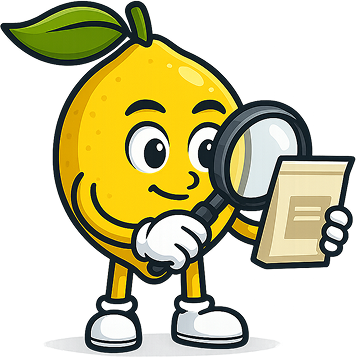
Recent Articles
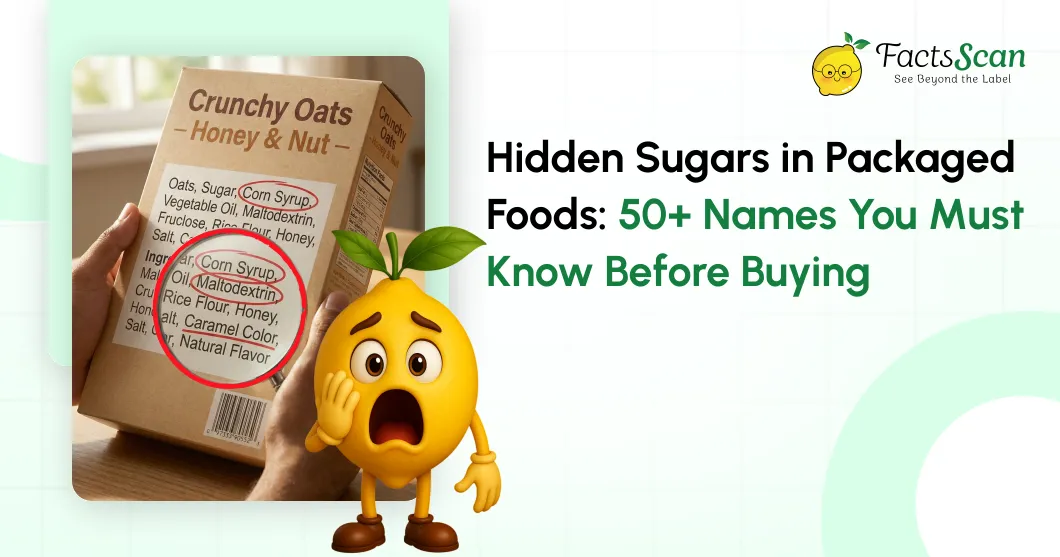
Hidden Sugars in Packaged Foods: 50+ Names You Must Know Before Buying
Uncover the shocking truth about hidden sugars lurking in everyday packaged foods. Learn why manufacturers add them, understand the serious health risks, and master the skill of identifying over 50 disguised sugar names on ingredient labels to protect your health.
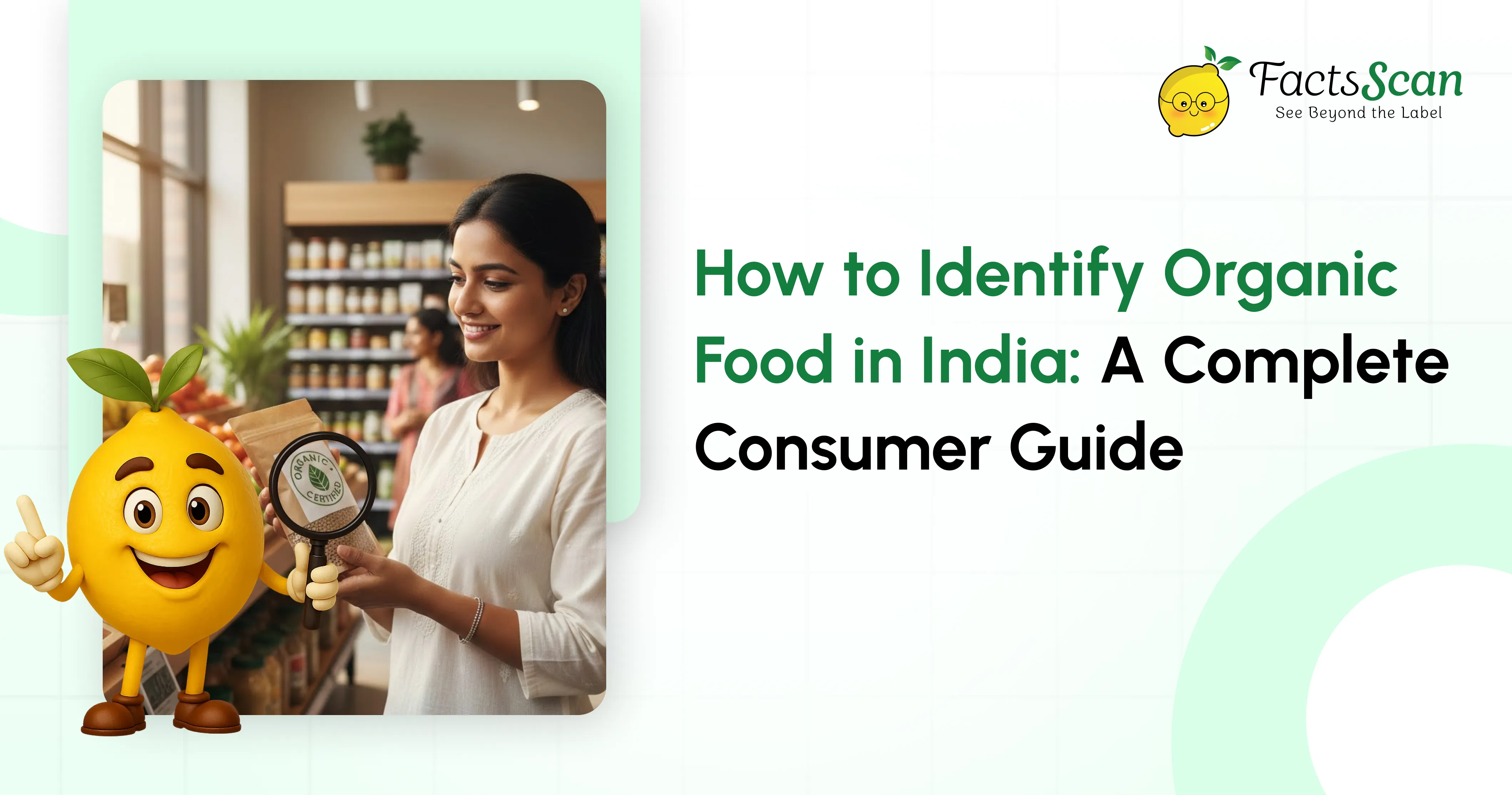
How to Identify Organic Food in India: A Complete Consumer Guide
Discover how to confidently identify genuine organic food in India. Learn about certifications, label reading, and effective ways to verify authenticity using simple, actionable steps for your everyday shopping.
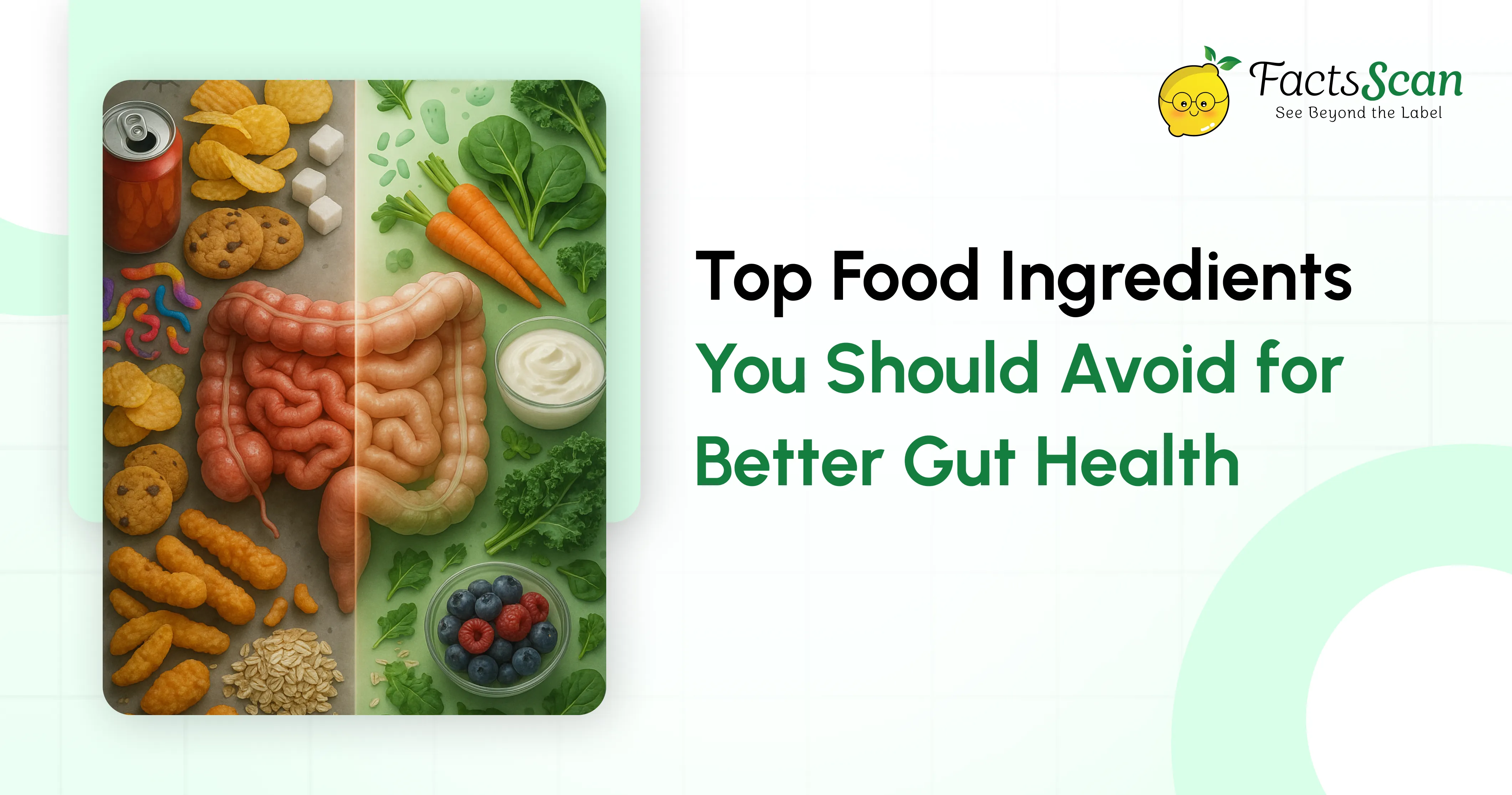
Top Food Ingredients You Should Avoid for Better Gut Health
Your gut microbiome is the foundation of your overall wellness, affecting everything from digestion to immune function. Yet many everyday food ingredients—artificial sweeteners, refined oils, emulsifiers, and preservatives—are slowly damaging this delicate ecosystem. Learn which harmful ingredients to eliminate from your diet and discover healthier alternatives using smart tools to identify nutritious, gut-friendly options that truly support your digestive health and long-term wellbeing.
 10 Oct 2025
10 Oct 2025 8 Min Read
8 Min Read 
